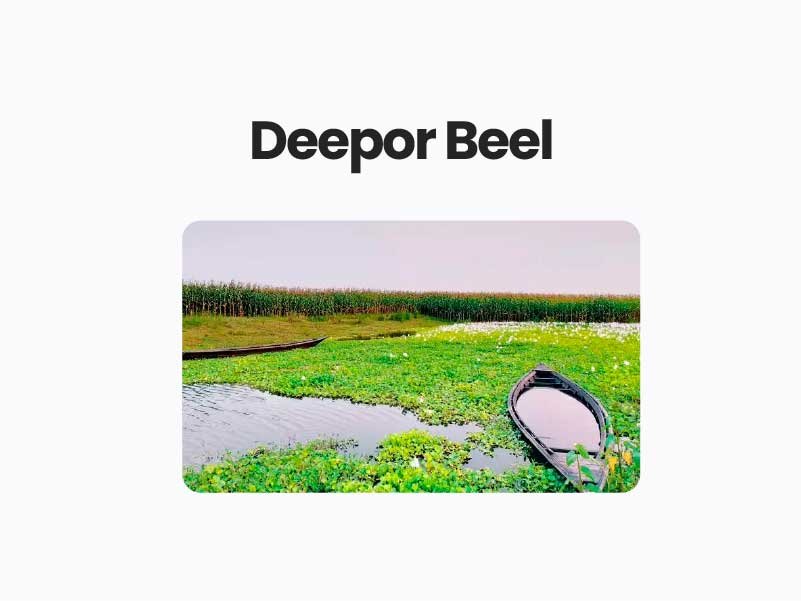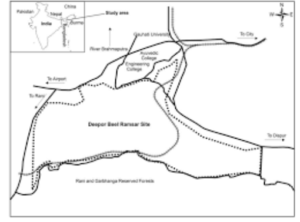
Deepor Beel
The Expert Team constituted by the Planning Commission, Government of India, to review the status of implementation of the National Wetland Conservation and Management Programme (NWCMP) of the Ministry of Environment & Forests, by visiting selected wetlands in the country, made an on-the-spot review and assessment of the Deepor Beel near Guwahati in Assam.
• Deepor Beel (Beel means wetland or large aquatic body in Assamese) located about 10 km Southwest of Guwahati city is considered one of the large and important riverine wetlands in the Brahmaputra Valley of lower Assam, India.

- Deepor Beel is an open lake basin connected with a set of inflow and outflow channels. Deepor Beel has both biological and environmental importance besides being the only major storm-water storage basin for Guwahati city.
- It is considered one of the staging sites for migratory birds in India; and some of the large congregations of aquatic birds in Assam during winter.
- Because of the richness of avian fauna it enjoyed, Deepor Beel has been selected as one of the Important Bird Area (IBA) sites by Birdlife International. Deepor Beel has also been designated as a Ramsar Site in November 2002.
Deepor Beel Wet Lands:
- The wetlands are actually land areas covered by water, either temporarily or permanently. Marsh, fen and peatland come under this category.
- They play a key role in the hydrological cycle and flood control, water supply and providing food, fibre and raw materials.
- They not only act as a source of water but also as ecosystems that prevent land degradation and desertification.
- In 2011, ISRO come out with a national wetlands atlas on the basis of satellite images, mapping over two lakh wetlands covering around 4.63% of the total geographic area of India.
- The list of 26 wetlands of India under Ramsar Convention. Globally, there are 2,220 wetlands in the Ramsar list.
National Plan for Conservation of Aquatic Ecosystems (NPCA) :
- It was launched by UPA Government in 2013 by merging two erstwhile schemes viz. National Lake Conservation Plan (NLCP) and National Wetlands Conservation Programme (NWCP) to run a single integrated programme for 12th plan.
- The idea was that a single programme would help promote better synergy and avoid overlap of the administrative functions.
- The principal objectives of the new scheme were holistic conservation & restoration of lakes & wetlands for achieving desired water quality enhancement, besides improvement in biodiversity and the ecosystem.
- The scheme was also expected to contribute to reduction of pollution loads and improvement in biodiversity apart from implementation of comprehensive Management Action Plans.
Enroll today with the best civils service academy and take your first step towards your Civils journey.
Feel free to reach out to us for any inquiries, collaborations, or support. We’re here to help.

